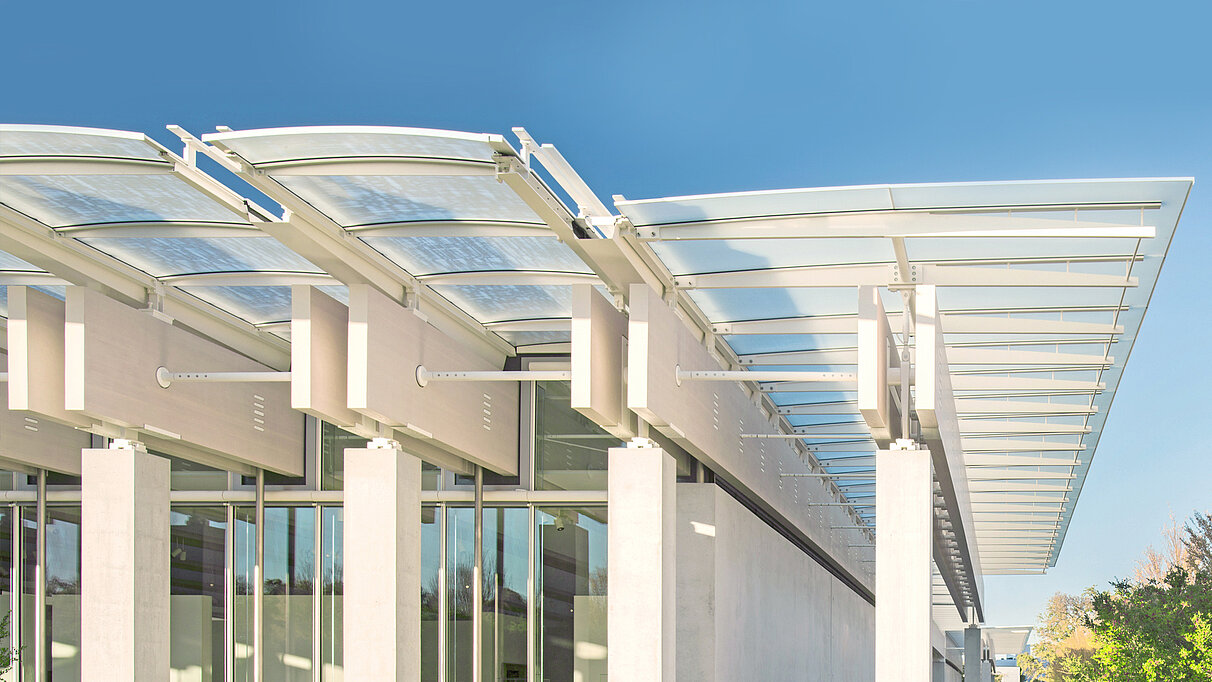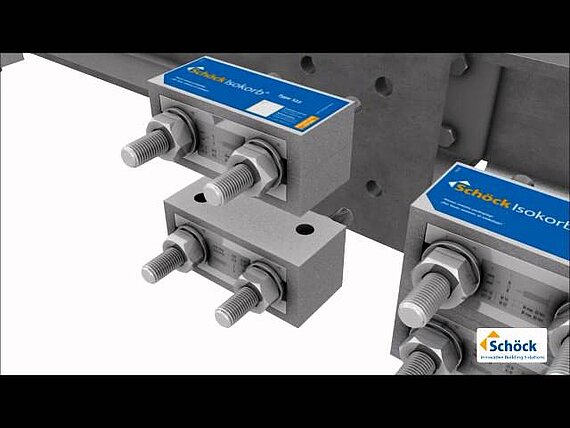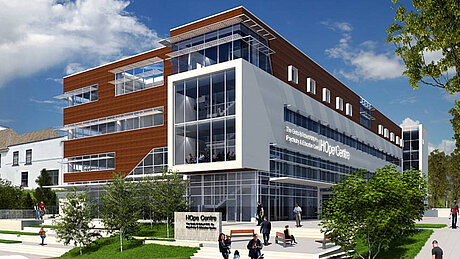Isokorb® Structural Thermal Breaks.
Insulate steel canopy and beam penetrations.
Reduce heat loss by up to 74 % while preventing condensation where canopies and beams penetrate the insulated building envelope by incorporating Isokorb® thermal breaks for structural steel beam & canopy applications into your design.
Uninsulated steel canopies and beams penetrating insulated building envelopes act like cooling fins, creating a thermal bridge between the cold exterior canopy or beam, and the warm interior steel or concrete structure that supports it, exposing the developer to short- and long-term problems.
By utilizing Schöck Isokorb® Thermal Breaks for structural steel beams and canopies, you can prevent problems associated with uninsulated connections.
read more
Problems caused by uninsulated canopies and steel beams
- Cost and environmental impact of wasted energy
- Condensation in interior cavities resulting in mold growth and related liability
- Noncompliance with new energy code requirements
Conventional canopies and beams waste energy and cause mold growth
Because of their load-bearing requirement, conventional canopies are designed as cantilevered exterior extensions of steel or concrete structures within the heated building envelope. As such, they create a thermal bridge in the otherwise continuous insulation of the building envelope, rapidly conducting heat away from the warm interior, through the insulated envelope and into the exterior environment.
For decades, wasted heat was considered unavoidable in North American buildings constructed with canopies.
Because these buildings also leaked air profusely, interior humidity levels equalized with low exterior humidity levels (typically 18 to 25%) during winter months. In many instances, forced hot air vented at or near the cold penetration further ensured that interior humidity remained too low to reach dew point, form condensation or support mold growth.
Airtight vapor barriers solved one problem, caused another
Modern buildings wrapped in air tight vapor barriers require less heat and retain more moisture from evaporation and human off-gassing, producing interior humidity levels of 35% to 50% (typical) during winter. While this humidity increase benefits energy efficiency and human comfort, it also allows the interior air to reach dew point, form condensation and support mold growth where cold canopies or beams penetrate the interior side of the building envelope.
When condensation forms at these penetrations, visible staining can occur, as seen in the image below. It also creates the ideal environment for mold growth, which can form on the inside face of sheetrock, studs and insulation years before it becomes visible on interior ceilings and adjacent walls, exposing the developer to remediation and liability costs.











